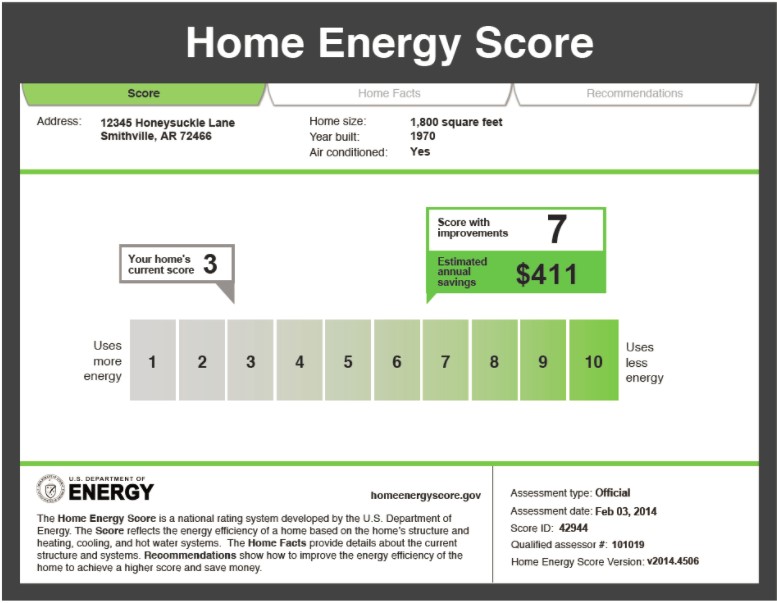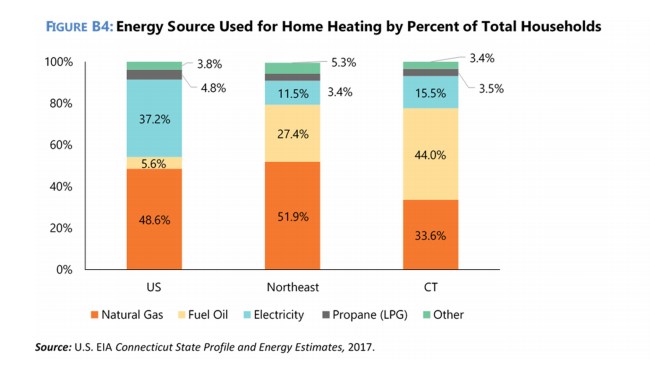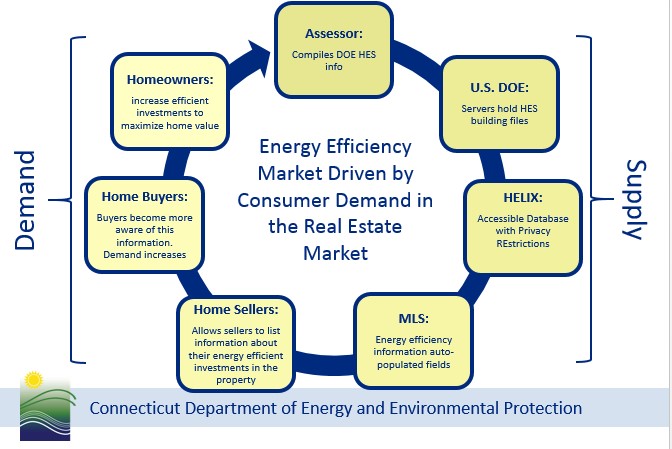By Shannon Dracup | Mon, November 20, 17
As we move full speed ahead into the winter season, temperatures are quickly declining and most New Englanders are prepping how they will handle the higher energy bills throughout the season. This is a yearly battle for many residents in New England as we combat Nor’easters and record low temperatures. Often times, we pay our bills without thinking twice. It has become a norm to have expensive energy bills in the winter and while there are some bills we can’t control (like monthly rent or mortgage payments), in the case of energy costs, there are things we can do to reduce our monthly payments.
Connecticut residents are saddled with some of the highest annual energy bills in the nation. To be more specific, they spend from eight percent to as much as 36 percent of their household income on energy. According to Operation Fuel’s 2016 report, an “affordable” energy cost burden for a Connecticut resident was estimated to be just six percent of household income, so you can see that Connecticut residents are paying much more than what they should on energy. This is all while Connecticut residents consume energy at a relatively low per capita rate. Further, Connecticut’s residential sector is responsible for 15 percent of the state’s energy consumption and 17 percent of greenhouse gas emissions.
What does this mean? There are steps that Connecticut can take to reduce this energy cost burden for its residents. As a leader in energy efficiency in the country, Connecticut could use this pain point of its residents as an opportunity to advance efficiency and healthy homes in Connecticut. That’s why Connecticut’s 2015 initiative to become the first state to implement the U.S. Department of Energy’s Home Energy Score labeling system was a step in the right direction.
Connecticut’s Home Energy Score Program
In May 2015, Connecticut launched the nation’s first voluntary statewide Home Energy Score Program. The Department of Energy’s Home Energy Score (HES) program provides energy consumption and cost estimates for more homes than ever before. In Connecticut, EnergizeCT’s Home Energy Solutions service assesses the energy efficiency of a home based on its structure and heating, cooling, and hot water systems, making energy efficiency labels universal across the state. Home Energy Solutions is working to help building owners better understand their energy cost burden. It provides them with the ability to take control of their energy consumption and reduce the cost of their monthly bills. The program will eventually help reduce the energy cost burden residents face by encouraging an understanding of energy data within the residential sector.
 During a home’s energy assessment, qualified HES technicians collect data and provide a score on a 1 to 10 scale, with a 10 considered excellent performance. The technicians also provide home facts and recommendations for further improvements, including the estimated annual savings and score associated with those improvements. The Connecticut Energy Efficiency Fund funded both United Illuminating Company and Eversource to integrate the Home Energy Score into their HES programs.
During a home’s energy assessment, qualified HES technicians collect data and provide a score on a 1 to 10 scale, with a 10 considered excellent performance. The technicians also provide home facts and recommendations for further improvements, including the estimated annual savings and score associated with those improvements. The Connecticut Energy Efficiency Fund funded both United Illuminating Company and Eversource to integrate the Home Energy Score into their HES programs.
The introduction of this flagship residential energy efficiency program was important for Connecticut considering the high-energy cost burden its residents face. A number of trends in the state’s housing stock, combined with current rates and energy prices, have further fueled this burden. Nearly 72 percent of housing units in Connecticut were built before 1979. The state’s antiquated housing stock has older homes that are typically less insulated, and have higher energy costs due to older, less efficient appliances and equipment.
Disproportionate energy costs are particularly apparent in Connecticut’s 322,000 low-income households. Low-income homes are often older, not as well insulated, and have maintenance challenges. For many low-income households, energy expenses compete with housing, food, and medical care costs, despite the support from programs such as the federal Low-Income Home Energy Assistance Program (LIHEAP) and utility administered matching payment plans. Additionally, around one third of Connecticut’s occupied housing units are rentals. This large renter population limits the direct control residents have over their energy choices and costs, particularly in multifamily housing where the units are often not owner-occupied.
Many of these older homes are heated with fuel oil at disproportionate levels compared to the rest of the country. Forty four percent of Connecticut housing units rely on fuel oil, compared to 27.4 percent regionally and just 5.6 percent of housing units nationwide. Further, 21 percent of Connecticut’s carbon emissions came from the residential sector in 2014, of which 63 percent was from petroleum. Petroleum includes fuel oil and propane. Figure B4 below identifies energy sources used for home heating within the US, the Northeast, and the state of Connecticut.
The state’s initiative to launch its home energy score program helps track its progress in meeting a goal of weatherizing 80 percent of homes by 2030. It also signals an important step towards improving the nation’s aging housing stock and encouraging energy-saving solutions in homes. States and cities including Colorado, Vermont, and Berkeley, California are following Connecticut’s lead and making scores more readily available to help homeowners and homebuyers determine a home’s expected energy use.

Connecticut’s Department of Energy and Environmental Protection (DEEP) drafted an updated 2017 Comprehensive Energy Strategy to advance the state’s goal of creating a cheaper, cleaner, more reliable energy future for Connecticut residents and businesses. DEEP is required to periodically update the CES to assess and plan for all energy needs in the state. In the 2017 CES, DEEP has put forth strategies and recommendations focused on increased energy savings and improved performance and productivity within the buildings sector to achieve the state’s greater carbon reduction goals.
Since launching the home energy score program, Connecticut has produced around 25,000 scores to date. The collection of home energy information and incentivizing home energy retrofits helps the state track its progress in meeting its goal of weatherizing 80 percent of homes by 2030, and achieving its long-term goal of reducing greenhouse gas emissions 80 percent below 2001 levels by 2050.
Now that Connecticut has these scores, and continues to do more, what should the state do with them? How can these scores help homebuyers and renters? The next step for Connecticut’s HES program is to consider including opt-in or opt-out language to enable third parties, such as Multiple Listing Services (MLS), to access the scores. The primary barrier to widespread access to energy information for homes on the market is that there is no system in place to transmit this data directly from sellers trying to market homes to the real estate listings buyers use to compare them. The missing piece of the puzzle is a database that will store home energy information.
Home Energy Labeling Information eXchange
The missing piece of the puzzle is Home Energy Labeling Information eXchange, or HELIX. HELIX is an initiative that is working towards developing a database capable of automatically populating real estate listings with home energy information from Home Energy Score and other sources when it is available and approved by the homeowner. The goal of HELIX is to remove the barrier of access to energy information for homes on the market. HELIX will serve as a database for U.S. DOE Home Energy Score data and as a conduit for incorporating this information into local MLSs while providing appropriate data security and privacy protections.
HELIX will make home energy information accessible to local MLSs and other market interests (e.g., assessors, appraisers, energy efficiency programs and service providers, lenders, and energy code officials). While HELIX focuses on the Northeast region, it aims to provide a replicable, open-source model that can be used throughout the country. The project will include trainings delivered to real estate professionals as well as continuous engagement with real estate market stakeholders in order to ensure a useful and effective product. The project will culminate in 2018 with full implementation of the HELIX database across the seven-state region.

To keep up its momentum, Connecticut DEEP has convened a working group to enable residential energy efficiency information – like the Home Energy Score – to be included in real estate listings. This type of information will be compiled in the MLS, putting future homeowners in a better position to understand the true cost of living in a home.
By collecting home energy scores and storing residential energy data within the HELIX database, this will lead to an increased awareness of and demand for efficient home investments. When a home has an energy score or label, the increased valuation of that home in the market tends to make the home sell faster. It’s similar to when you’re buying a car and you know the miles-per-gallon of that car – this information doesn’t necessarily make or break your decision to purchase the car, but the added information helps you to better understand what will result from your decision. Buying a home is an emotional investment and the home energy score will simply provide a better understanding to homebuyers of what goes on “behind the walls”.
As homeowners, buyers and renters increase their understanding of energy data and the related cost burden, they’ll better prepare for the changing seasons and fluctuating temperatures. Statewide programs like Connecticut’s Home Energy Solutions are steps in the right direction to reducing New England residents’ energy cost burdens and empowering building owners to market their energy efficiency improvements. Incorporating HELIX into these programs will result in a repository that allows the exchange of energy data generated through efficiency measures to be used in the real estate market, proving to be impactful in driving energy efficiency.
